First Presbyterian Church plans demolitions despite Historic Macon opposition
Office of architect Ellamae Ellis League and century-old administration building could be razed for outdoor worship and event space on Mulberry Street
First Presbyterian Church’s administration building will be torn down to make way for an outdoor worship space originally approved in 1991.
When First Presbyterian Church’s imminent plans to demolish two downtown buildings came to light in recent weeks, Historic Macon Foundation led the opposition with a social media post encouraging people to oppose the project.
But the demolitions have been dropped from Monday’s Design Review Board agenda, leaving only an application for a certificate of appropriateness for the design of the church’s new outdoor activity and worship space at 682 Mulberry St., which planning and zoning staff endorses. It’s not immediately clear if the removal from the agenda means the demolitions will be allowed to happen without a new review because of a 31-year-old decision that had OK’d the plans.
Thursday, the agenda listed both proposed demolitions – the church’s three-story administration building built in 1925 that has reported structural issues impacting the third floor, and the c1945 former office of Macon’s female architect pioneer Ellamae Ellis League, the first woman to become a Fellow of the American Institute of Architects.
According to information previously listed on the mbpz.org website, First Presbyterian Church adopted a phased plan in 1989 to shape the outdoor space and secured approval from the Macon-Bibb County Planning and Zoning Commission in 1991.
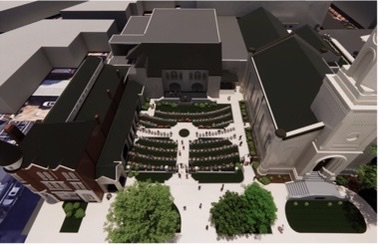
The present plan was contingent on the purchase of the Library Ballroom, which was recently under contract after the congregation approved its purchase this summer.
The Macon Newsroom reached out to P&Z Executive Director Jeff Ruggieri for an explanation about why the demolitions are no longer on the agenda, but he did not respond in time for this article.
At the conclusion of the last P&Z meeting, Ruggieri explained this was a complicated issue to Chair Jeane Easom and Josh Rogers. Because a prior P&Z decision permitted the demolition of the buildings to make way for the event space, Ruggieri said that ruling could stand if the church was continuing to pursue the project since 1991.
“Call Pope,” Easom said, referring to the commission’s legal counsel, Pope Langstaff.
Since the demolitions are no longer going to be considered, but the final site plan for the outdoor space will be, it appears Langstaff has ruled that the prior decision stands. An explanation is expected at Monday’s meeting.
When the demolitions were on the agenda, the accompanying report stated that the Design Review Board staff deemed both projects as “inappropriate” and noted the century-old administration building was designed by prominent Macon architects Dunwody and Oliphant.
“While it may not be outstandingly notable, there are few examples of this sort of Romanesque Revival style stucco buildings in Macon, especially in downtown Macon,” the staff report stated. “Because of its 100-year existence in this spot it has acquired a place as an essential feature of the streetscape and the overall church campus.”
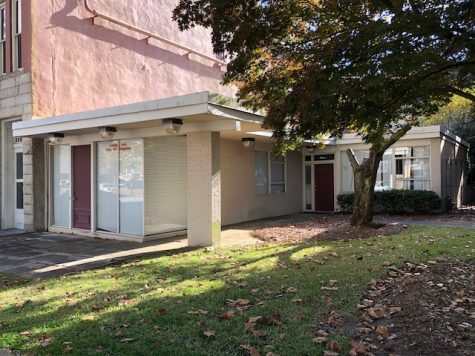
The League office space, which most recently was occupied by Campus Club, is one of the “few remaining international style buildings in downtown,” the report said.
The staff concluded both buildings have historical significance for downtown.
“To remove any building is taking a piece from the fabric of the district, but especially also in the area in which it sits. Setting is essential to a historic district as well as an individual property’s significance. Drastic changes to its surroundings, including demolition of historic buildings, or incompatible new construction on the site diminish the historical significance,” the report read.
The staff opinion with the current application for design approval supports the site plan.
“Staff finds that the proposed open-air event and worship space with colonnade and front fencing to be appropriate provided that the fencing along the Mulberry Street face is visually weighty enough to evoke a structural presence in the streetscape. This will prevent it from appearing as a vacant lot in the center of a block,” the report states.
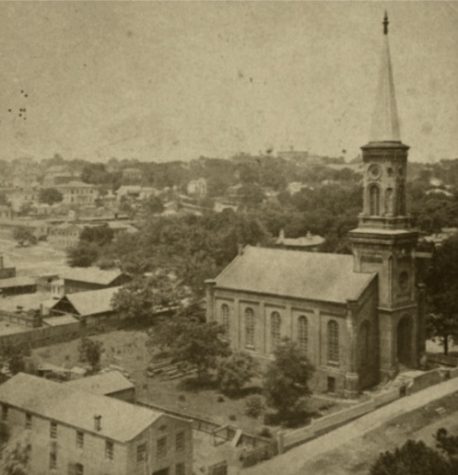
A photo from 1870 shows there is historical precedent for an open space next to the 1856 sanctuary.
“Do you know that our church used this exact area in the late 1800’s for outdoor prayer meetings?” First Presbyterian Pastor Chip Miller asked in a letter about the project that was sent to the congregation last month.
Miller asked for prayer before the Nov. 7 DRB meeting and the Nov. 14 P&Z hearing so that the church could complete the third phase of its master plan.
Demolitions ‘a mistake’
Friday afternoon, Historic Macon Foundation Executive Director Ethiel Garlington was unaware that the demolitions were no longer on the agenda. Garlington said he had reviewed the demolition applications that morning when they were still online.
He still plans to attend Monday’s meeting to voice Historic Macon’s continued opposition to the project, Garlington told The Macon Newsroom.
Gene Dunwody Jr., a First Presbyterian church member whose grandfather designed the administration building, said his late father told church leaders the administration building could be saved if they restored the load-bearing walls that had been moved.
The Dunwodys also opposed the demolition of the other building, as League got her start with the family’s architectural firm, Dunwody Jr. said.
“I just think it’s a big mistake tearing down these buildings,” said Dunwody. “I’m sad about it. I wish my dad was here to articulate why it was a mistake.”
Dunwody is a fan of the recent outdoor worship services that allowed the congregation to meet during the COVID-19 pandemic.
“I enjoy sitting outside more than I do inside,” said Dunwody, who would prefer if the church built something in its parking lot across First Street instead of tearing down what he refered to as “iconic buildings.”
Although Dunwody intended to go to Monday’s meeting, if the demolition is a done-deal, he said he doesn’t want to waste his time.
“That’s pretty shady if they do it,” he said. “I mean, I would be super disappointed in whoever made that decision because, you know, just because a decision was made 30 years ago does not mean that it was a good decision.”
Other agenda items
114 Buford Place – Homeowner seeks DRB approval for landscape changes after the board ruled his existing plantings are not in compliance.
582 Mulberry St. – Sign approval sought for the Washington Lofts 1857 and Christian Law.
476 Third St. – New signs proposed for the Dannenberg Lofts.
566 Poplar St. – Applicant seeks approval for signs for the new Dannenburg West lofts.
478 Poplar St. – One South Bank has new signage that must be approved.
235 Buford Place – Property owner would like to replace existing wood windows and make exterior modifications to the home.
383 Buford Place – Applicant would like to change the picket fence and whitewash previously unpainted brick.
– Civic Journalism Senior Fellow Liz Jarvis Fabian covers Macon-Bibb County government entities and can be reached at fabian_lj@mercer.edu or 478-301-2976.



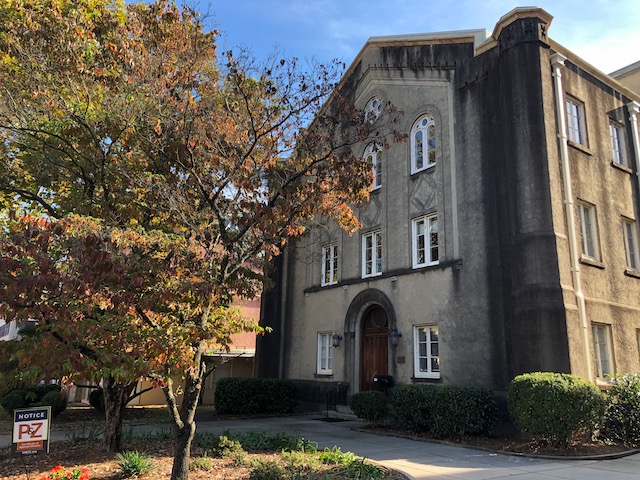

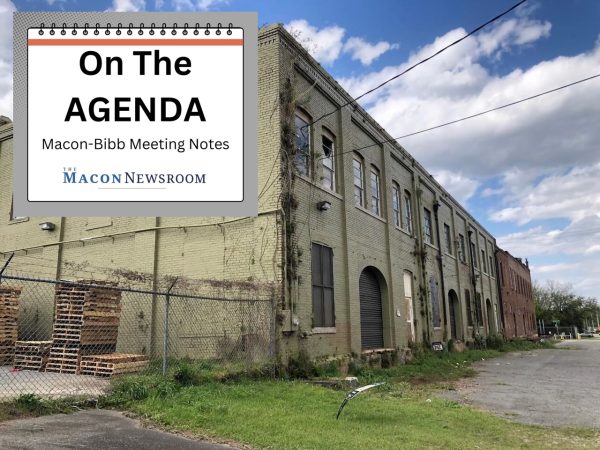
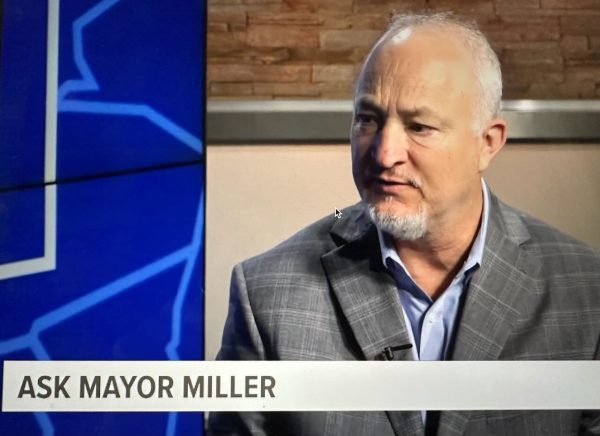
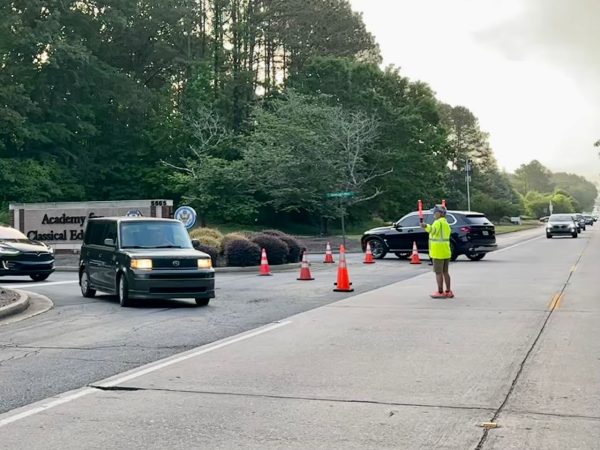

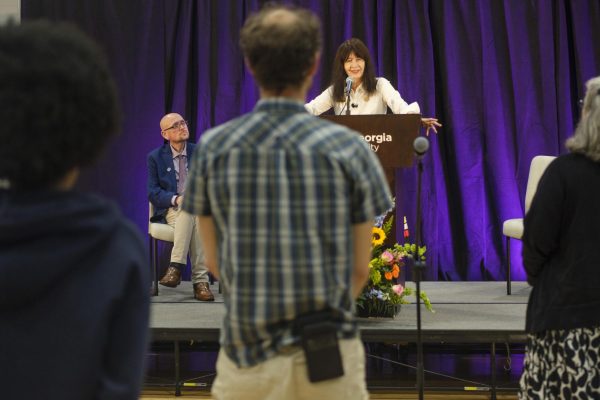
Lisa Allen • Nov 5, 2022 at 12:59 pm
Very sad.